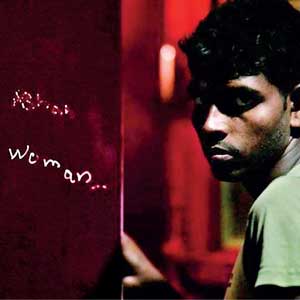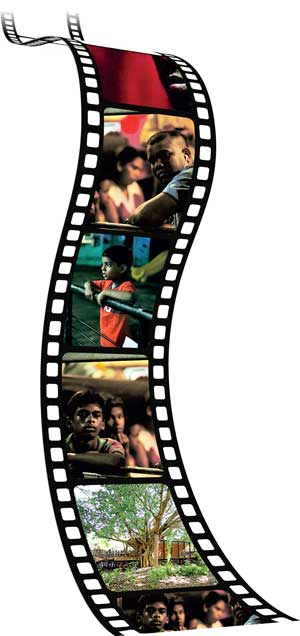Reply To:
Name - Reply Comment
 Sri Lankan film maker Jude Ratnam’s début documentary, Demons in Paradise, got the rare red-carpet honour at the Cannes Film Festival recently, but he is certain that he will be called a “traitor” for making it. “For me, the film was a way of confronting the questions I have had since childhood about my Tamil identity,” he told The Hindu in an interview in Colombo.
Sri Lankan film maker Jude Ratnam’s début documentary, Demons in Paradise, got the rare red-carpet honour at the Cannes Film Festival recently, but he is certain that he will be called a “traitor” for making it. “For me, the film was a way of confronting the questions I have had since childhood about my Tamil identity,” he told The Hindu in an interview in Colombo.

As a five-year-old, Mr. Ratnam fled the capital with his parents to escape the July 1983 anti-Tamil riots. His formative years were spent in the Tamil-majority North-East of the island nation where, as a displaced boy, he witnessed different Tamil militant groups organising themselves.
“The young men with guns, preparing to fight the oppressive Sri Lankan Army, looked like heroes to me.”
Returning to the roots
Later, his family moved to Kandy in the central highlands where his father, an Anglican priest, was stationed, before returning to Colombo. More than three decades later, the filmmaker took the train to the north, just as his family had in 1983, for his 90-minute film on Sri Lanka’s civil war through the experiences of his own family.
NGOs think that reconciliation happens when you put five Sinhalese and five Tamils in the same hall of a five-star hotel. How can that ever work without factoring in our histories and the politics of the war? How can Tamils reconcile with the Sinhalese before reconciling within the Tamil community first?
Take the question of caste. Contrary to what many say, the LTTE never eradicated it; they merely brushed it under the carpet. Otherwise why would we see caste-based discrimination emerging as a major challenge in post-war Tamil society?
In its largely autobiographical first half, Mr. Ratnam draws on some vivid childhood memories to narrate how the war impacted his family. “My mother would wipe off her pottu (bindi) and my father dressed in sarong to look like the Sinhalese. And those days our family spoke Tamil in hushed tones for the fear of being heard and killed,” the 39-year-old filmmaker recalled.

All the same, the film is not about the Ratnams alone, whose ancestors came to Sri Lanka from Tuticorin in Tamil Nadu six generations ago. He uses his family’s past as a peg for a larger story — of a Sinhala majoritarian state that victimised Tamils; of the birth of Tamil armed militancy; of the path it took the Tamil community on; and of the nagging questions that persist eight years after the war ended.
He goes back to eye-witnesses and people seldom heard in the narratives of war — like the Sinhalese photographer who captured the iconic image of a Tamil man being stripped naked at a bus stop in the heart of Colombo in 1983, shortly before he and others like him were murdered; and the railwayman who witnessed scores of Tamils escaping to the north, including some who were callously thrown off the train.
It took Mr. Ratnam ten years, and enormous conviction and family support, to make the film. “I had to work very hard to convince some people to talk. It was when [Mahinda] Rajapaksa was in power. There was a climate of fear, many were scared to speak candidly about the past,” he said.
This project came out of his disillusionment with the human rights sector — where he had worked — that he felt was severely flawed in its approach. “NGOs think that reconciliation happens when you put five Sinhalese and five Tamils in the same hall of a five-star hotel. How can that ever work without factoring in our histories and the politics of the war? How can Tamils reconcile with the Sinhalese before reconciling within the Tamil community first?” he asked.
These are the questions that dominate the second half of his film. Here, Mr. Ratnam probes the Tamil community’s political choices and militancy using the story of his uncle Manoranjan, who discouraged him from joining the armed struggle. “Like many young boys I too toyed with the idea. But he had been there, done that and knew where it was headed.”
Mr. Manoranjan, who was raised in Kandy and speaks fluent Sinhala, moved to the north as the war intensified, where he made an unusual move of joining a small left-wing group, the National Liberation Front of Tamil Eelam (NLFT). But after a few years, with the LTTE’s growing hegemony and the repression of other organisations, he decided to give up the gun and continue his political work as a journalist. Following death threats from the LTTE, he was forced to leave Sri Lanka and relocate to Canada. The film shows him visiting the country after many years, re-uniting with the Sinhalese neighbours in Kandy who had given refuge to his family following communal violence; and revisiting some traumatic memories of bloodshed and brutality in Jaffna.
In this segment, the film turns its lens on the complex impact of the armed struggle on the Tamil community, including through a rare critique of the LTTE from one of its former cadres. “We were so cruel… you cannot accept that in the name of the struggle,” says Vasudevan, now living in the U.K., when recounting his participation in the LTTE’s “massacre” of some 900 militants from the rival Tamil Eelam Liberation Organisation (TELO) in the internal violence that gripped the Tamil polity.
Elsewhere, Mr. Manoranjan breaks down when recalling the LTTE’s execution of two dissident student activists — Selvi and Manoharan — who had saved his own life and the lives of others from the Tigers. In an eerily dramatic scene, former militants from different Tamil organisations sit in the dark around a fire, reflecting on how Tamil civilians suffered at the hands of other Tamils who were ‘weeding out’ rivals and dissidents in their midst.
Need for introspection
This sort of introspection — of the past and its manifestation in the present — is in Mr. Ratnam’s view indispensable for meaningful post-war reconciliation. “Take the question of caste. Contrary to what many say, the LTTE never eradicated it; they merely brushed it under the carpet. Otherwise why would we see caste-based discrimination emerging as a major challenge in post-war Tamil society?” he asked.
Asked about the lesser emphasis on state violence in the second half of the film, which depicts the time when the Sri Lankan armed forces turned more brutal as the war heightened and resorted to endless shelling to capture territory held by the LTTE, the filmmaker said: “I didn’t mean to underplay the atrocities of the Sri Lankan state or the armed forces. In fact, my appeal through this film is not just to the Tamils. But to everyone — are we ready for honest self-introspection?”
Mr. Manoranjan also hopes that the film will open some doors in breaking the ‘taboo’ around the pain inflicted by Tamils on fellow Tamils and Muslims. “Tamil society is struggling within itself to do a truthful self-examination of what went wrong. Though it is slowly happening among the ordinary masses, the Tamil media, the academic community, the religious entities and the political parties are still adamantly maintaining silence,” he told The Hindu via email.
While the film subtly points to this apparent silence, it makes no pronouncements. “That is because I don’t have definite answers. I started off with my own discomfort about being a Tamil and that led me to many questions,” said Mr. Ratnam, for whom working on the documentary was “cathartic”.
“At the end of it, I think I have come to terms with my Tamil identity, shedding the fear and guilt I have had for long,” he said.
Though sceptical about whether many would be willing to screen or distribute the film, he is steeling himself to be labelled a “traitor” by many Tamils, as the LTTE and its supporters branded its critics within the Tamil society. “Not just in Sri Lanka, I want to ask film viewers in India, and particularly in Tamil Nadu, who shed tears for Eelam Tamils, if they have the courage to watch this film made by a Sri Lankan Tamil who lived here all through the years of war.”
Courtesy: THE HINDU